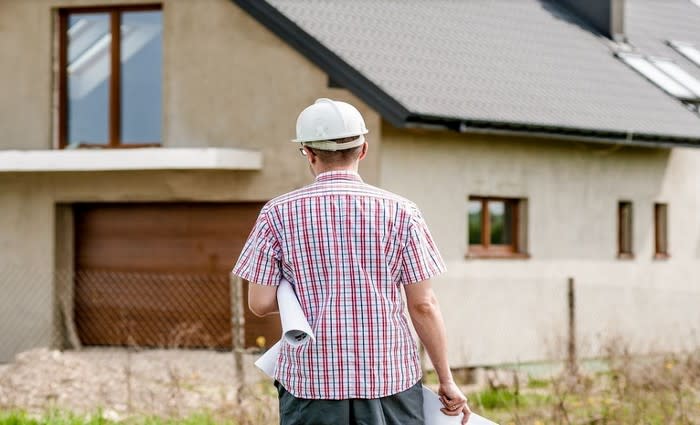Cost of building a house posts biggest slide in 20 years: CommSec's Ryan Felsman
EXPERT OBSERVER
Aussie businesses are operating under challenging conditions. Weaker sales and trading are restraining production and weighing on profit margins. A softening in demand is largely attributable to slowing economic activity in the lead up to the Federal election. But growth in producer prices remains subdued.
Cost pressures are continuing to build, however, and are mostly being absorbed by Aussie businesses. In fact, over the past two years, raw material and intermediate good prices have lifted by around 6 per cent, while final output prices have lifted by 3.5 per cent. Rising commodity prices, especially for crude oil, gas and iron ore have shown up in lifting input prices – particularly for the manufacturing sector – which experienced a contraction in activity earlier this year.
And Australian companies - especially in the services sector - are experiencing greater competition given the fact that consumers can buy goods whenever they want and wherever they are – domestically or from overseas.
The Aussie property market might be stabilising, but softness was evident prior to interest rate cuts and the Federal Election. Gaining access to credit was more difficult as bank lending standards were tightened. Builders reduced prices aggressively as budding home owners were discouraged from committing to new builds due to falling home prices. Costs fell by the most in Victoria, down 3.1 per cent over the year to June – the biggest annual decline in 6½ years. And over the year to June, Aussie housing costs fell by the most since June 1999.
Producer prices
The “final demand” component of producer prices (business inflation) rose by 0.4 per cent in the June quarter to stand 2.0 per cent higher than a year ago. Of final stage prices, domestic goods prices rose by 0.3 per cent (1.7 per cent annual), while import goods prices rose by 1.4 per cent in the quarter and by 3.8 per cent over the year.
According to the Australian Bureau of Statistics, the lift in final stage prices (excluding exports) was driven by increases in Petroleum refining and petroleum fuel manufacturing (up 11.7 per cent), “Other” transport equipment manufacturing (up 5.3 per cent) and Heavy and civil engineering construction (up 0.5 per cent).
Final stage prices increases were partly offset by falls in the prices received for “Other” agriculture (down 7.7 per cent), Electricity supply, gas supply, water supply, sewerage and drainage services (down 1.0 per cent) and Fishing (down 13.1 per cent).
Prices of intermediate goods were flat in the June quarter to stand 1.6 per cent higher over the year.
Preliminary stage materials rose by 0.2 per cent in the June quarter to be up 2.0 per cent over the year.
Manufacturing input prices rose by 2.2 per cent in the June quarter due to an increase in Oil and gas extraction (up 7.1 per cent), Metal ore mining manufacturing (up 5.9 per cent) and Agriculture to manufacturing (up 3.1 per cent) prices. Output prices rose by 1.0 per cent in the June quarter due primarily to a lift in Petroleum refining & petroleum fuel manufacturing (up 9.3 per cent) prices. Output prices are up 3.0 per cent over the year with inputs up 3.9 per cent.
House construction input costs rose by 0.2 per cent in the June quarter to be up 1.8 per cent over the year – near the slowest annual pace in five years. Electrical equipment prices rose the most (up 6.1 per cent), followed by “Other” materials (up 2.5 per cent), timber, board & joinery (up 1.2 per cent) and “Other” metal products (up 1.2 per cent).
House construction output prices fell by 0.5 per cent June the June quarter to be down 0.7 per cent over the year – the weakest annual growth rate in 20 years.
Building construction output prices rose by 0.4 per cent in the June quarter to be up 1.4 per cent over the year – the slowest annual growth rate in 3 years. Queensland building construction prices fell by 0.1 per cent over the year to June – the slowest pace in 7 years.
“Other” residential (apartments) building construction rose by 0.9 per cent in the June quarter and lifted by 2.7 per cent over the year to June.
Heavy and civil engineering costs lifted by 0.5 per cent in the June quarter to be up 3.0 per cent over the year.
Commercial building output prices rose by 0.8 per cent in the June quarter to be up 2.3 per cent over the year.
What are the implications for interest rates and investors?
Aussie business continues to absorb higher costs. The good news is that the cost increases have slowed. The hope is that businesses may get in a position where they can direct more dollars the way of their employees.
The Reserve Bank is expected to sit back for a few months before deciding the next move on rates.
RYAN FELSMAN is a Senior Economist for CommSec
